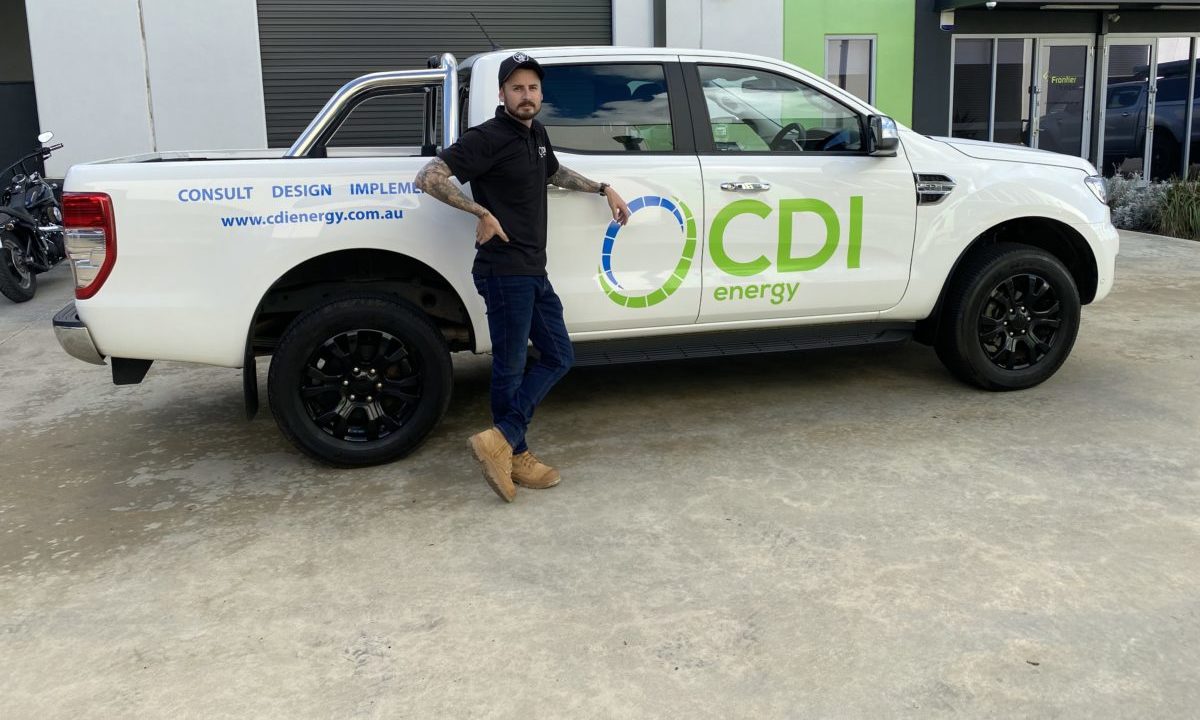From pv magazine Australia.
How long does it take four installers to put in 100 kW of ground-mounted solar? Darryl Bower, director of Western Australian company CDI Energy has devised a new portable, cyclone-rated mounting system he says enables four workers to install it in 10 hours, rather than 10 days.
The low-cost system, which comprises four prefabricated parts, offers an overall reduction in cost of installation from the industry standard of around $1.20 per watt (US$0.86), to $0.80/W, according to its developer.
Bower is an electrical contractor and CDI Energy, which specializes in the installation of remote renewables projects, is a division of his principal business, CDI Electrics.
When CDI Electrics was working on a new site camp for Melbourne-based gold miner Newcrest, Bower raised the idea of installing solar to offset some of the costs of diesel generation. Newcrest, however, countered with the argument posed by many miners, that it did not want to invest in a solar system which could outlive the mine.
Any panel
“They said, if we could rent them a solar system, they’d consider it,” said Bower. “So I sat down and thought about it and tried to work out how we could install a solar system that we could take away after a few years.”
Popular content
Rapid Solar Module (RSM) was the result. Its concrete-beam bases are fastened into the ground to enable solar panels to be fixed in an A-frame configuration and angled as required.
Bower says said the first iteration of RSM, which has been specified by a Western Australian engineering firm to withstand cyclonic winds, can be used with any monofacial solar module on the market. The second model is being designed to enable the mounting of bifacial panels.
Capital
The solution does not quite enable CDI Energy to lease solar systems to mining companies because it does not yet have the capital to construct a $1-1.5 million system in anticipation of reaping the rewards when a project has paid for itself, within five to seven years. However, Bower has a couple of demonstration projects in the works, chosen by developers because of the reduced cost of installation.
“Traditionally,” said Bower, “solar installation has been a very lengthy process.” It was worth developing the system for remote projects, he explained, “because working remotely costs a lot – labor is very expensive.”
The relative mobility of the system could enable operators with numerous sites to deploy and redeploy solar assets, or could offer a patient investor the option of renting systems to various shorter-term operations, helping them decarbonize as they set up and power down.
This content is protected by copyright and may not be reused. If you want to cooperate with us and would like to reuse some of our content, please contact: editors@pv-magazine.com.



By submitting this form you agree to pv magazine using your data for the purposes of publishing your comment.
Your personal data will only be disclosed or otherwise transmitted to third parties for the purposes of spam filtering or if this is necessary for technical maintenance of the website. Any other transfer to third parties will not take place unless this is justified on the basis of applicable data protection regulations or if pv magazine is legally obliged to do so.
You may revoke this consent at any time with effect for the future, in which case your personal data will be deleted immediately. Otherwise, your data will be deleted if pv magazine has processed your request or the purpose of data storage is fulfilled.
Further information on data privacy can be found in our Data Protection Policy.